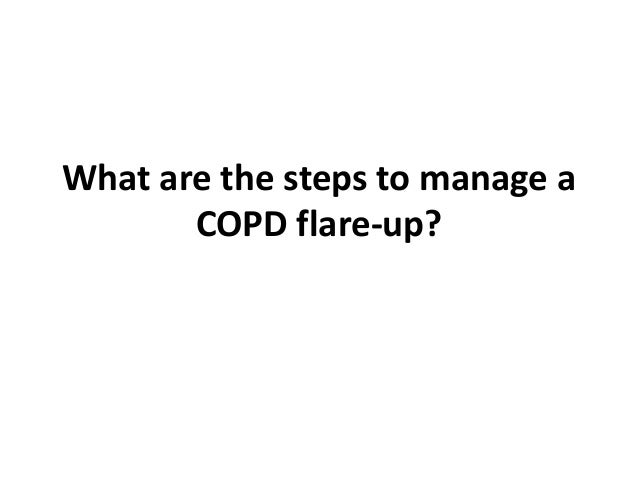What are the steps to manage a COPD flare-up.pptx
•Download as PPTX, PDF•
0 likes•3 views
COPD is a long-term health problem that causes breathlessness and a decrease in respiratory functioning. The condition is life-threatening and develops when one experiences obstruction in the airflow due to damage or collapse of alveoli or air sacs.
Report
Share
Report
Share

Recommended
Recommended
More Related Content
More from leelindesy
More from leelindesy (20)
Chillers Powering the Cooling Needs of Essential Industries.pptx

Chillers Powering the Cooling Needs of Essential Industries.pptx
Which Is Better Semi-automatic or Fully-automatic Washing Machine.pptx

Which Is Better Semi-automatic or Fully-automatic Washing Machine.pptx
Central AC vs VRF Which is the Best Cooling Solution for Your Home.pptx

Central AC vs VRF Which is the Best Cooling Solution for Your Home.pptx
What should you expect when going for a PSG test.pptx

What should you expect when going for a PSG test.pptx
Can snoring affect your relationship with your partner.pptx

Can snoring affect your relationship with your partner.pptx
Can you use your HVAC system to reduce allergy symptoms.pptx

Can you use your HVAC system to reduce allergy symptoms.pptx
What are the different types of sleep apnea tests.pptx

What are the different types of sleep apnea tests.pptx
Is your AC leaking water Here is what you can do about it!.pptx

Is your AC leaking water Here is what you can do about it!.pptx
Acute vs chronic insomnia Definition, symptom, and causes.pptx

Acute vs chronic insomnia Definition, symptom, and causes.pptx
What should you know about your air conditioner compressor.pptx

What should you know about your air conditioner compressor.pptx
How do allergies affect your good night’s sleep.pptx

How do allergies affect your good night’s sleep.pptx
Rest problems responsible for disrupting sleep in elderly people.pptx

Rest problems responsible for disrupting sleep in elderly people.pptx
Which is better A central AC or ductless air conditioning system.pptx

Which is better A central AC or ductless air conditioning system.pptx
How can you improve your quality of life if you have COPD.pptx

How can you improve your quality of life if you have COPD.pptx
What are the steps to manage a COPD flare-up.pptx
- 1. What are the steps to manage a COPD flare-up?
- 2. COPD is a long-term health problem that causes breathlessness and a decrease in respiratory functioning. The condition is life-threatening and develops when one experiences obstruction in the airflow due to damage or collapse of alveoli or air sacs. The chronic obstructive pulmonary disease causes are smoking, breathing chemically-rich or dirty air, and inhaling second-hand smoke. When patients with this problem experience signs like coughing, shortness of breath, and wheezing, it may indicate COPD exacerbation or flare-up. This can be frightening and uncomfortable. Thus, it is essential for people with the condition to learn how to manage COPD flare- ups. Here is all you need to know!
- 3. How to manage COPD flare-ups? If you are going through a COPD flare-up, you should look at the COPD action plan your doctor worked out for you. He must have outlined the specific actions and doses to manage the flare-up. Use a quick-acting inhaler: Relief or rescue inhalers help improve the condition by sending a powerful stream of meds straight to constricted lungs. The inhaler relaxes the tissues in the airway, making it easier to take in oxygen. Anticholinergics and beta2- agonists are two common types of inhalers recommended for COPD patients. You can add to their efficiency by using them with a spacer or nebulizer. 2. Try an oxygen tank: Doctors advise many COPD patients to use supplemental oxygen at home. It may prove more helpful if you are experiencing a flare. When inhaling oxygen, follow the COPD action plan advised by your doctor. Try relaxing and controlling your inhalation process when breathing in.
- 4. 3. Take oral corticosteroids: The corticosteroids help control the COPD flare-up. They reduce the swelling and widen the airways to let more oxygen inside the lungs. You may ask your doctor to prescribe them to you if they are not already included in your treatment plan. He may recommend you take them for a week or more after the fare-up to keep the inflammation under control.
- 5. 4. Switch to mechanical intervention: If the flare-up is severe, it is possible that oral corticosteroids, oxygen, and inhaler might not improve your condition. They may fail to bring the symptoms back to normal. In this case, a machine called a mechanical ventilator might be recommended to help you breathe. So, to improve your condition, using a quick inhaler, trying an oxygen tank, and taking oral corticosteroids are some solutions. However, if none of these work, you may want to reach out for help. You can consider getting admitted to a hospital to make things better for you.
- 6. Thank You
